
The global securities markets experienced stormy volatility and much stress during the second half of August this year. Johann Wolfgang von Goethe and Friedrich Schiller were strong proponents of the "Storm and Stress" movement in 18th Century Europe. I suspect that if they were traders today, they might have foreseen Black Monday!
In our previous article [“COULD GOETHE AND SCHILLER HAVE IMAGINED BLACK MONDAY?”] we characterized the August financial markets as having been dominated by “Sturm und Drang” – a German expression that comes from a literary movement that included two giant historical figures from that nation — Johann Wolfgang (von) Goethe and Johann Christoph Friedrich von Schiller. The most common translation of that German phrase is “Storm and Stress”… and all will agree that we have witnessed plenty of that in these past few weeks.
In that prior article, we offered, in some detail, six of the underlying factors that (eventually) precipitated this turmoil in August. And now we are ready to cover the seventh (and perhaps most intriguing) of these underlying factors:
7) Despite all of the considerable documentation that corroborates the importance and significance of the previously listed six factors… (including the regulatory issues related to bank regulation and the SEC) there are those who would attribute much (if not most) of the turbulence that occurred during the second half of August to the massive and unprecedented (and seemingly universal) stimulus of “cheap money” provided through central banks around the world. As we know, the so-called “Father” of this unprecedented monetary stimulus is none other than our own Dr. Benjamin Bernanke – who chaired the U.S. Federal Reserve between 2006 and 2014. For those who like to keep important developments within a chronological context, “Quantitative Easing (QE)” was born on November 25, 2008.
Since that fateful day, QE has spread to other nations, and like a snowball rolling down hill, it has steadily grown in size and impact. The best-known practitioners of QE (besides the U.S.) have been the Eurozone, the United Kingdom, Japan, and the People’s Republic of China… but expansion of QE continues. Just this year, for example, more monetary easing has been applied in India, Canada, Russia, Australia, and Indonesia. And of course, as in most other areas of finance and economics these days – China has presented the world an intriguing and complicated mixture of “easing” and “tightening”. China’s effort to stimulate its economy and stop the bloodletting in its stock market has served to “ease” monetary conditions. However, following the (“one-time”) devaluation of the Yuan, additional downward pressure was brought to bear on the Yuan within the Forex market. That unintended result forced the PBOC to prop up (stabilize) Yuan pricing by buying Yuan-based securities and selling foreign assets (such as U.S. Treasuries) … resulting in an overall impact of “tightening”.
No matter how one couches the monetary easing trend, it is widely agreed that all of this global easing has thrown world markets and economies into unchartered waters. Just to remind us of the unparalleled magnitude of all of Bernanke’s “QE” programs (and don’t forget is “Operation Twist”!), here is a graph of the Federal Reserve’s Balance Sheet as of the end of 20014:
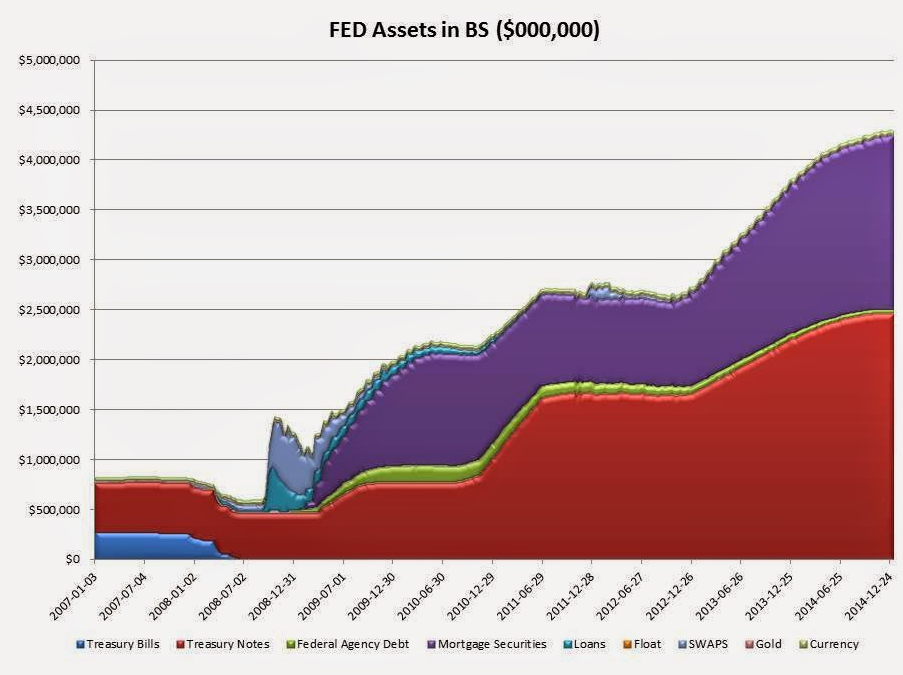
This graph helps us to visualize the massive ballooning of the Federal Reserve balance sheet since B. Bernanke initiated Quantitative Easing I. That balance sheet has ballooned over four-fold in size.
Economics 101 teaches that whenever monetary expansion takes place (thereby increasing “money” in circulation) those dollars (or Euros, Yuan, Pounds, etc.) must find someplace to go. In a “Zero Interest Rate Policy” (ZIRP) economy, it makes no sense for individuals to park any additional dollars in a bank account. Therefore, those funds get plowed into the stock market.
As for corporation use of this incremental supply of money, in the “good old days” (before the Financial Crisis and QE) additional “cash on hand” would most likely have been invested in the expansion and enhancement of its ability to produce marketable products/services – thereby growing earnings and profit margins. However, under the circumstances that have prevailed since 2008 – abnormally lagging consumption growth and historically low interest rates – corporate management has engaged in an unprecedented level of “financial engineering”.
The macro trend within the boardrooms of corporate finance has leaned heavily toward the refinancing of existing corporate debt (lowering the average yield on corporate debt), the repurchase of corporate stock shares (“Buybacks”), and merger with or acquisition of other companies (to increase market share, diversify, and/or achieve hoped for “synergies” that will improve margins). Therefore, instead of “expanding production” and fostering organic growth, corporations have tended to improve financial metrics (and increase management bonuses) the “easy way”.[1]
In this manner, as observed by the founder of S3 Partners (a financial analytics and services firm), Robert Sloan: “The Fed’s $4 trillion [balance sheet] is distorting the discounted earnings mechanism in the marketplace.” Tellingly, the most objective among those who are related to the U.S. Federal Reserve do not at all disagree with that sentiment. In a July research paper, Stephen Williamson (the V.P. of the St. Louis Fed Bank)
observes that fully six years of QE, which has swollen the balance sheet of the Fed by over $4.5 trillion (as you saw earlier), has not appreciably boosted economic activity and growth:
“casual evidence suggests that QE has been ineffective in increasing inflation” and only seems to have boosted stock prices.
Not surprisingly, experts and analysts from other countries have concurred with the view that global QE has caused significant (and troublesome) dislocation. Analysts at Deutsche Bank opined that during the market events of August “the fragility of this artificially manipulated financial system was exposed”. In addition, they posit that
“the genesis of this recent sell-off has been the threat of the Fed raising rates next month, but China's confrontational move two weeks ago and the subsequent knock-on through [emerging markets] have accelerated us towards something more serious.”
Although he does not single out Mr. Bernanke by name, the head of credit research at RBS[2], Alberto Gallo, has offered a stinging critique of Quantitative Easing. First (echoing the observations of Sloan and Williamson) Gallo charges that the over reliance by policymakers on excessive monetary liquidity has actually inhibited true capital investment (and future growth)[3]… motivating corporate managements to choose share buybacks and dividend hikes that were often funded by new corporate debt. Then he offers this indictment:
“Policymakers responded to the financial crisis with easy monetary policy and low interest rates. The critics — including us — argued against ‘solving a debt crisis with more debt.' Put differently, we said that QE was necessary, but not sufficient for a recovery. We are now coming to the moment of reckoning: central bankers look naked, and markets have nothing else to believe in.”
I suggest you re-read that last sentence and feel the full impact of its meaning:
the “markets have nothing else to believe in”!
Have we finally reached the point when, as in the classic 1837 tale by Hans Christian Andersen, “the people” finally confront the fact that the Emperor is not wearing any clothes?[4]
Here is a visual illustration from RBS Credit Research of “The QE Infinity Paradox”:
To compound matters even further, it has become apparent through the past few years that the Federal Reserve, at best, is “inconsistent” with regard to what it calls “Forward Guidance”… and at worst, downright misleading. To help us understand this point, Williamson offers this definition of “Forward Guidance”:
“Forward guidance, generally, consists of instructions from the central bank to the public at large about its policy rule.”
Williamson hinted at his own evaluation regarding how the Fed has performed with regard to guidance when he wrote this:
“The idea that it is socially beneficial for central banks to behave in a systematic and well-understood fashion is probably the most important contribution of post-1970 macroeconomic thought to monetary policy. For policy to be effective, private economic agents need to understand that public statements by policymakers are actually informative about future policy actions. Incredible statements by policymakers can only lead to distrust.”
So what would be the most helpful course for members of the Federal Reserve to take during period of market storm and stress such as August 17 to August 28?? One could immediately brainstorm two simple options:
1) Stay out of the way so the Fed does not risk making matters worse; or
2) Rely on just one person within the Fed (presumably Janet Yellen) to reply to press inquiries or offer reassurances that might serve to calm and stabilize the market, much as Alan Greenspan did in January of 2002:
Is that what happened in August of 2015? Decidedly not! Consider this contrast in “Fed Speak” within the course of just a few brief days:
On Friday, August 21st, St. Louis Fed President, James Bullard, stated that the Fed does not react directly to equity markets.
Just five short days later (August 26th, and the day after the U.S. stock markets suffered a virtual “meltdown” late in the trading day)…
New York Federal Reserve Bank President, William Dudley, made a point of proclaiming publicly that, given the recent financial market turmoil, there was now a “less compelling” case to be made for raising rates in September!
What?!!! So which is true:
1) The Fed does not react to equity markets. OR
2) The Fed does react to equity markets?
The investing public wants (needs) to know!
Many of our readers are familiar with Dennis Gartman from his countless appearances on CNBC.
I readily acknowledge that Mr. Gartman is more experienced than I am with regard to security market history and dynamics. During his CNBC appearance on Monday, August 31st (the first trading day following the huge annual central bank conference in Jackson Hole, Wyoming) Gartman had this to say:
“I think this morning's action is as confusing as any as we have seen, all predicating upon whether the Fed shall or shall not move in September, whether it can or cannot move in September. And listening to the various comments from the monetary authorities in Jackson Hole Wyoming, I'm still confused as to whether they can or cannot move in September.”
I believe that Mr. Williamson would heartily agree with the implication of Gartman’s frustration – namely, the Federal Reserve has done a very ineffective job offering market participants a clear, dependable, consistent message with regard to future monetary policy. No wonder the favorite “sport” on CNBC, Bloomberg, and Fox Business these days is endless, fruitless, pointless banter regarding “If the Fed can raise rates in September”… and if it can’t, “When will the Fed actually begin to raise rates?”
INVESTOR TAKEAWAY:
As I woke up on Black Monday and looked at the pre-trading day news – highlighted by the prospect of a “straight down” opening gap in the equity indices – I made a firm decision:
It was crystal clear that it was too late to sell…… and too early to buy!
My biggest challenge was whether I could maintain the discipline required to simply not watch the markets and not listen to the talking heads on CNBC spewing emotionally charged hyperbole regarding what was going on! My decision to move on to other tasks and other topics of interest may have been one of the best “Market Decisions” I have ever made! That decision (and my discipline) spared me the frustration of trying to trade in the midst of the chaos wrought by circuit breakers and “Rule 48” … spared me from exposing myself to the agony of “trading whiplash” (as prices moved up and down quickly and unpredictably)… and contributed to my ending up with a “productive day” instead of a day filled with profanity-laced ranting, elevation of blood pressure, and a general gnashing of teeth!
When it became obvious that we would not be experience a sharp “V-Shaped Recovery” as we did in October of 2014, some investors nonetheless took heart that the market at least stabilized. Their hope was based upon the prospect of solid gains a month or two hence, if they “bought the dip”.
I would never, out of hand, dismiss such hope. But Jason Goepfert (from SentimenTrader) has offered a sobering counterpoint to that hope harbored by many investors:
When one reviews historical data for S&P 500 Index performance following an epic reversal … such as we just experienced (the best one-day gain in more than three years shortly after the worst one-day loss in three years)… investment returns have not been impressive! For example, the average return one-month after such a reversal has been a negative six percent! Even more disheartening, the most recent such reversal occurred in September of 2008 (just before the collapse of Lehman Brothers). One month following that reversal, the market was down some 25%!
To suggest to you that this market environment requires an extra amount of caution and trading “forbearance” should (I hope) be obvious to all of our readers!
That being said, however, I do readily admit that we are navigating ourselves through what are clearly “unchartered waters”! We’ve never before experienced a market as globally connected as the one with which we live today… much less a globally connected market literally awash in a sometimes tumultuous sea of “loose money” and unprecedentedly low interest rates! No one can possibly know what could (or will) happen – whether for good or ill.
Deutsche Bank’s Jim Reid has expressed this same reality much more eloquently than I have:
“One of the biggest problems we face is that there is no historical template for current global market conditions so we’re all flying blind to a large degree. Never before have so many of the most important countries in the world printed so much money and left base rates at near zero for so long. Also never before has the largest economy in the world tried to start a slow process of reversing said extraordinary policy. So there is no road map for this journey, only educated (hopefully) predictions.”
In my research, I ran across one additional interesting consequence of vast global monetary easing:
Within the European equity markets, the average “stock-to-stock pairwise correlation” for the month of August was reported at 0.81 – which is the very highest ever recorded!
Why is that metric of significance?
As we have been noting for the record, global equity markets have been getting pumped up by vast amounts of global monetary (and fiscal) stimulus. Although (as I have reiterated at several points) we are in unchartered territory because of this unprecedented artificial liquidity … the historical data that can be drawn upon suggests that (within an environment flush with monetary easing) there is a greater tendency for stocks to move in tandem, rather than strictly upon their own individual merits.
As one author has expressed it: when every stock follows the same story, dispersion falls and correlation increases. The inevitable result is:
- There is less diversification within stock indices;
- Equity correlations rise
- Index volatility rises with it.
It is well worth noting that, with regard to the S&P 500 Index, correlations have also risen – to the highest level in four years!
Another reality is the historical pattern tied to August itself! During a “normal year”, August is a “sleepy” little month within the markets. Most of the “big boys” are enjoying a latte summer holiday in the Hamptons:
(or the French Riviera):
So when something of great significance to the “Market” has the audacity to occur in August, that event wields an outsized impact upon the financial markets!
We saw an earlier example of this in August of 2011… when due to the boneheaded incompetence of politicians in Washington D.C., there was a “technical default” on U.S Treasury Securities.[5]
Did you catch the convergence of fundamental causation above between government action and stock market crisis? August of 2011 saw the highest previous level of S&P 500 Index correlation, as well as a sudden fall in securities value, due to mismanagement by leaders in Washington D.C. And now August of 2015 witnessed a spike in correlation within the S&P 500 Index, as well as a scarier, steeper, and deeper market fall … all due to steady stream of quixotic (and sometimes contradictory) actions by the government in Beijing that laid bare the vulnerabilities inherent within a global financial network artificially propped up by central bank manipulation rather than by legitimate, sustainable, economic growth!
So here we sit, shaken and uncertain, awaiting the resumption of securities trading in China (which took a “break” before our Labor Day Weekend) and wondering if the Federal Reserve will raise rates in September! Of course, no matter what China does and no matter what Janet Yellen and her fellow FMOC members do, the unusually high correlations within the stock indices will only serve to amplify and magnify whatever response the Market makes to all of these government machinations![6]
No matter how one slices it, we currently find ourselves in a very fragile market environment! Between the relatively high equity correlations, a significantly deteriorated level of market “faith” in central bank monetary “magic”, increasingly bizarre developments coming out of the People’s Republic of China, continuing (albeit diminished) drama in Europe revolving around Greece, and the perpetual fixation within the United States upon Fed interest rate “lift off”… even otherwise minor market “hiccups” can potentially become magnified into significantly worrisome price movements!
Meanwhile, for those who find value in generating their market view based upon economic fundamentals (rather than Fed “funny money”), despite the “party line” that the U.S. economy is growing (albeit slowly)… there is sufficient contrary evidence popping up on a fairly regular basis to provide fodder for genuine differences of opinion regarding precisely where the U.S economy is heading. For example, here are two recent graphs from the FED website that visualize key economic metrics.
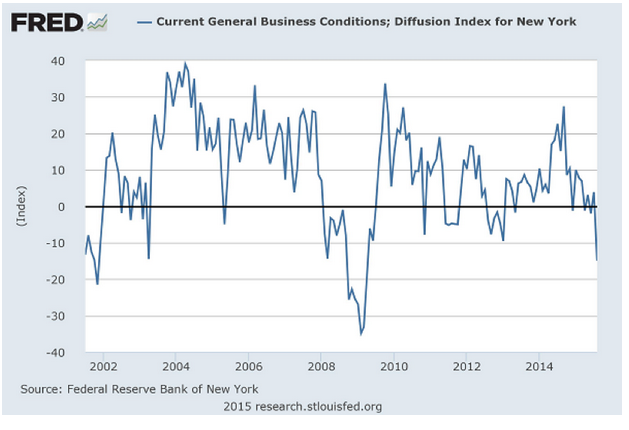
For anyone searching diligently for signs of convincing growth in the U.S. economy, this is not an encouraging graph.
If you interpret these in a similar vein as I do… they hardly inspire conviction regarding the U.S. economy reflecting an improving trajectory toward growth!
Of course, there are those investors who hypothesize that, following the steep drop in prices during August, equity valuations must be more attractive! The basic weakness in that thought process is the thorny matter of how one can truly determine when/how the market becomes more “attractive” … and by what degree it is more attractive. After all, “attractive” is in the “eye of the beholder”!
For example, gather 10 females of varying ages in a room and show them photographs of 10 males who manifest distinctive visual qualities and whose accompanying personality descriptions offer an intriguing range of characteristics and skills. What are the chances those ten women will agree upon one (or even two) of those men being “most attractive”? Not very high!![7]
Let’s take a look at two of the metrics we described in detail for our readers in the May 31st article on valuation [https://www.markettamer.com/blog/market-valuation-watch-for-the-puca].
1) Robert Shiller’s CAPE Ratio is centered upon a metric inspired by investment icon (and Warren Buffett teacher/idol] Benjamin Graham) – the P/E 10. As you review these charts and graphs, the inevitable conclusion will be that, although U.S. equities are not as overvalued now as they were on May 21st… they still are not in any way close to being “undervalued” (or even “fairly valued”). Therefore, the question of whether equities are “more attractive” or not is most definitely one for which the answer depends strictly upon “you”!
2) And of course we have the famous Warren Buffett valuation metric: Total Market Capitalization/GDP Ratio. As you review these images and graphs, you will likely come to the same conclusion as above (with the Shiller data). Yes, U.S. equities are not as overvalued now as they were on May 21st… but they do remain “modestly overvalued”. Therefore, you alone remain the arbiter of whether or not equities are “more attractive” now!!
Finally, it is worth taking a moment to review one additional investor-accessible valuation metric. One can refer to this metric as “Earnings Yield” … a helpful way to compare “apples to oranges” when trying to evaluate potential future stock returns vis-à-vis prospective bond returns.
With regard to bonds, we can ascertain what the coupon rate is, and therefore what the prospective interest yield is for that bond. We can also assume that, within an environment that (presumably) will be dominated by interest rates that are stable to rising… the total return during any given year will most likely be that interest yield … or the interest yield less a bit of principal erosion due to rising rates (with longer maturity bonds being more significantly impacted than shorter maturity bonds).
Earnings Yield is the opposite of the Price-to-Earnings Ratio. Instead of taking a given stock’s price and dividing it by its earnings per share, we take that stock’s earnings per share and divide it be the stock price! Sound intriguing? It is!
Consider this comparison:
At the 2015 peak in market price for the S&P 500 Index, the “Earnings Yield” was 4.7%. That translates as follow: For every $100 one has invested in the Index (or in SPY), one controls $4.70 in annual earnings. And (unlike with bonds) those earnings (and the related “yield”) is expected to grow over time!
As of Friday, September 4th, the earnings yield was up to 5.17%, so buyers are getting $5.17 in earnings for every $100 invested. That is definitely a more attractive yield than in May (in fact, 10% more attractive!). However, whether the higher yield adequately compensates you for the added risk related to equities these days is a matter that only you can discern!
So I leave you with the 18th Century visionary outlook of two giants from German history: Johann Wolfgang (von) Goethe and Johann Christoph Friederich von Schiller. The era that preceded them (the Enlightenment) was one that focused upon reason, analysis, and order. But Goethe and Schiller considered a much more apt description of life to be that of Sturm und Drang (roughly translated as “Storm and Stress”).

A statue in Weimar, Germany, of intellectual and literary giants, Johann Wolfgang (von) Goethe and Johann Christoph Friedrich von Schiller .
Investors and traders alike were most assuredly rocked by much storm and stress during the second half of August of 2015! In sharp contrast to the neatly constructed analytics of the economic camp that has given us the Capital Asset Pricing Model (CAPM)… I suspect that, if Goethe and Schiller were living today (and into keeping up with global financial developments) they could have foreseen the inevitability of this Sturm und Drang. They certainly would have quickly tired of the pedantic repetition, within the 24/7 business broadcast cycle, of handwringing and gnashing of teeth regarding issues ranging from a Grexit (Greek exit from the Eurozone)… to the timing of the “Fed Funds liftoff”… and (variously) the “Hard Landing”, the “Market Collapse”, “the Implosion” within the People’s Republic of China.[8] At a minimum, Schiller and Goethe could collaborate upon an insightful and entertaining script for a movie that portrayed the inevitable chaos, comedy, storm, and stress that results from the convergence of Lehman Brothers, Benjamin Bernanke, Quantitative Easing, Greek profligacy, European leadership mismanagement, the sometimes “Keystone Kop”-like management of the immense Chinese economy by officials in Beijing, and the SEC’s episodic management of exchange regulation (rather than applying “Gestalt” management of regulation that might have foreseen the dysfunction of allowing HFT while creating “Rule 48” in the years just prior to the adoption of the Volker Rule and Dodd/Frank regulation … which served to dry up (if not destroy) market liquidity! Storm and stress, indeed!

Each episode of the classic Police TV Show, "Hill Street Blues", included an admonition during the morning "roll call": "Be careful out there!"
In the meantime, faithful readers… in the lexicon of the classic 1980’s TV police drama, “Hill Street Blues”… please remember to “Be careful out there!”
DISCLOSURE:
The author does have a considerable portion of his net worth invested in a diversified portfolio of funds, ETFs, and selected stocks – none of which are highlighted in any promotional way in the article above. In addition, the author is not related to either Goethe or Schiller, nor (thank heavens) to Benjamin Bernanke, nor anyone at the Federal Reserve, the U.S. Securities and Exchange Commission, the Politburo in Beijing, or Goldman Sachs (GS). Nothing in this article is intended as a recommendation to buy or sell anything. Always consult with your financial advisor regarding changes in your portfolio – either subtractions or additions.
FOOTNOTES:
[1] As we have frequently highlighted, share buybacks have the effect of showing positive improvement in key metrics such as Earnings per Share, Revenue per Share, P/E multiples, etc. However, such metrics tend to disguise the “reality” that organic growth is absent and the prospects for future corporate vitality and expansion have not improved at all. One example of a stock still suffering from the inevitable “peeling away of the curtain” from the prolonged impact of such financial engineering is IBM (IBM). See: https://www.markettamer.com/blog/think-before-you-invest .
[2] Formerly the Royal Bank of Scotland
[3] For those who appreciate a review of basic economic theory… here is the classic explanation for an optimum monetary policy:
The price of money (ie. the official interest rate… in the case of the U.S., the “Fed Funds Rate”) at which any economy operates (in the long-run) most efficiently is one that does not veer too far from the level at which savings and investment can find a clearing price (i.e., the natural rate of interest). That level is referred to as the Wicksellian Differential, i.e., the difference between the money rate and natural rate of interest. Within this framework, it is presumed that when the natural rate is higher than the money rate (ie. Fed Funds Rate) the disequilibrium will drive credit expansion. That is precisely the situation to which Mr. Bernanke’s QE has driven us.
[4] For those with a sense of humor, here is a cartoon image of Dr. Bernanke as an “emperor” without clothes.
[5] Members of Congress and the President could not manage to act like mature adults and agree upon a Federal Budget.
[6] And the people making these decisions are supposed to be our “best and brightest”!
[7] Unless, of course, I was included among the options provided!!
[8] Although I must say that, as maddening as the financial press has been, the sports press (and sports broadcasting in particular) have been ever so much worse with senseless 24/7 handwringing about “Deflategate” since this past February!
Related Posts
Also on Market Tamer…
Follow Us on Facebook

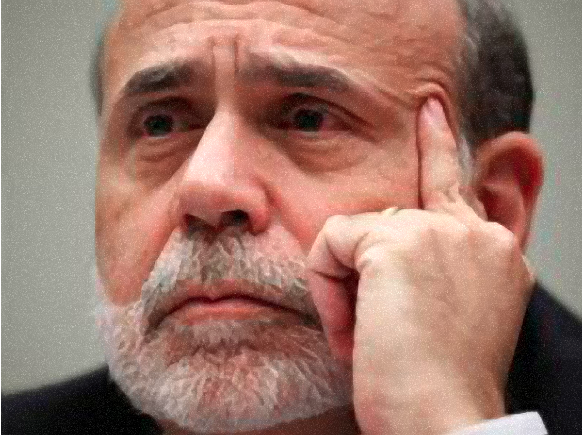
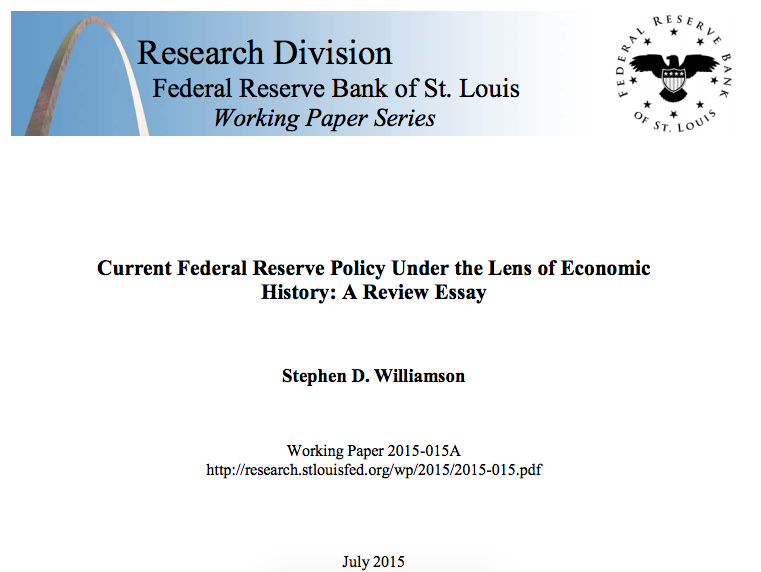

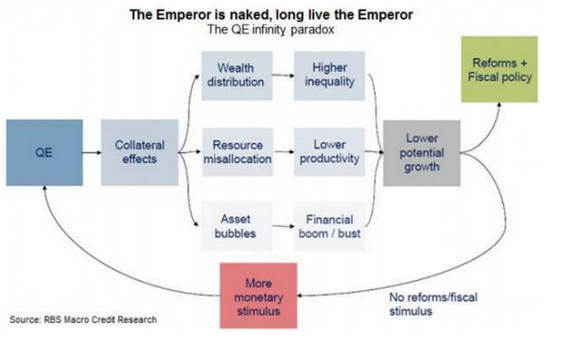
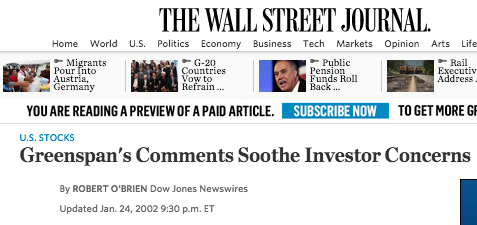
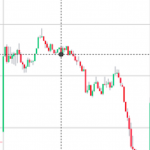

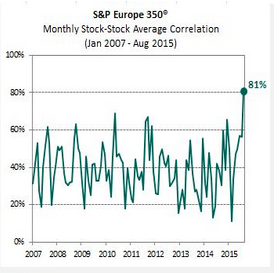


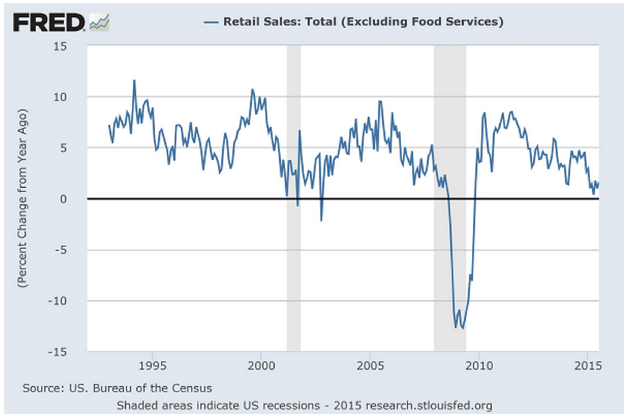
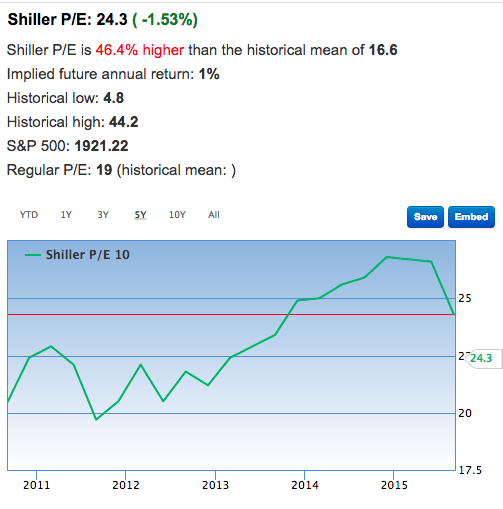
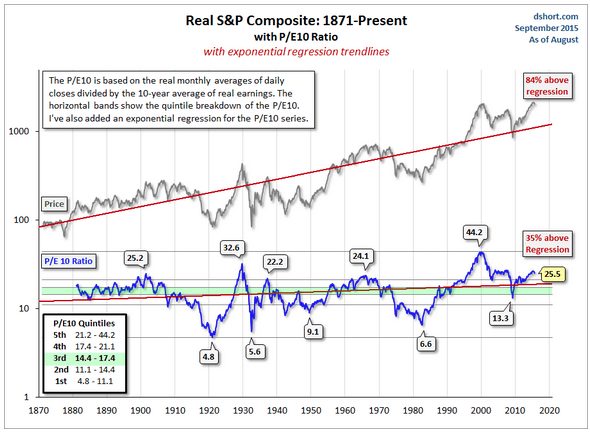
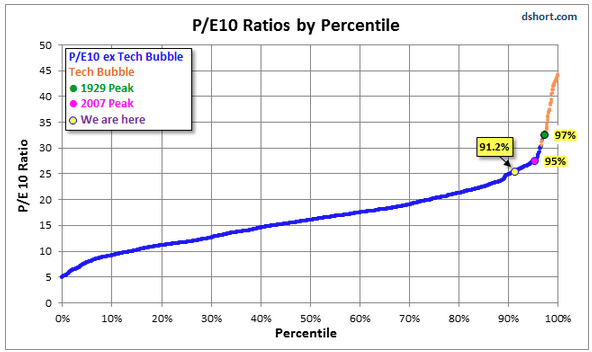
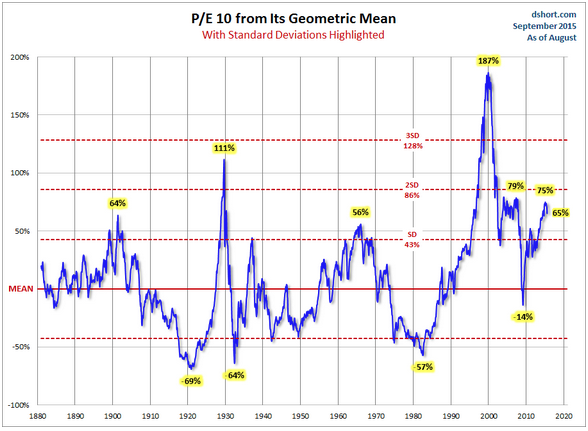

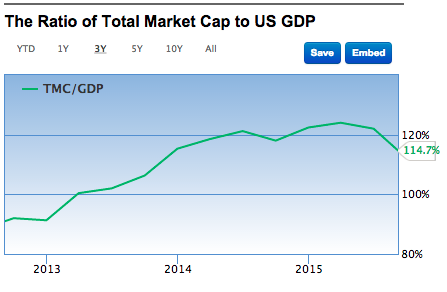
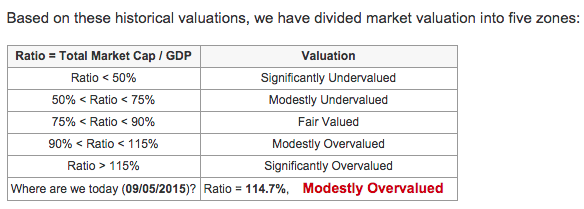
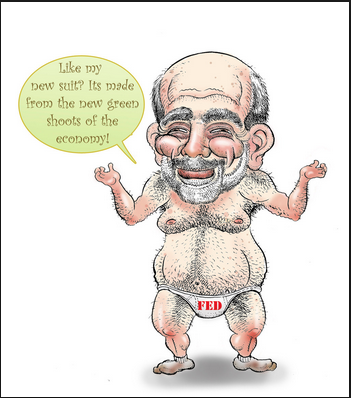
 Why Bitcoin, Ethereum, and Dogecoin Are Surging Higher Today
Why Bitcoin, Ethereum, and Dogecoin Are Surging Higher Today
